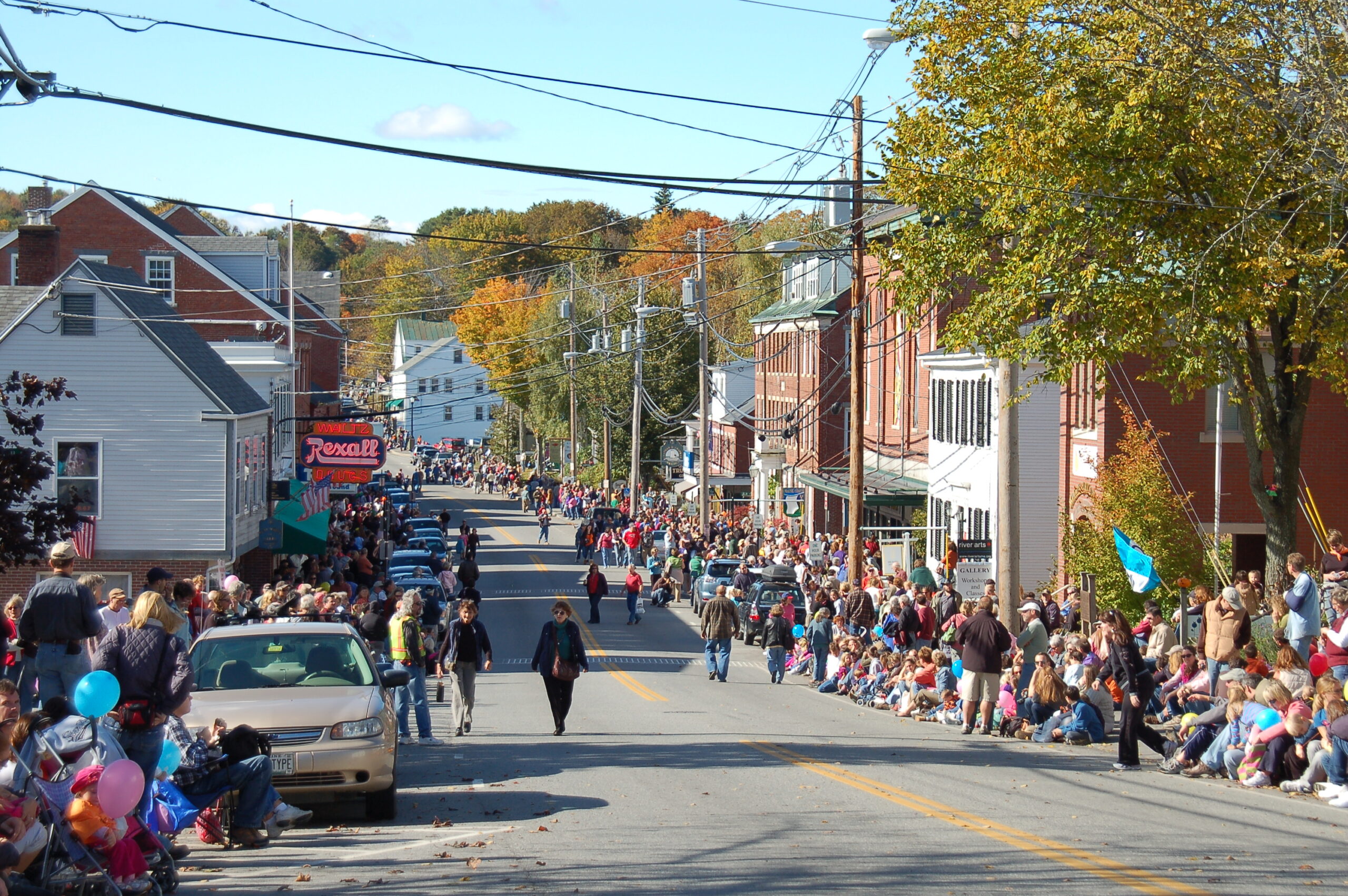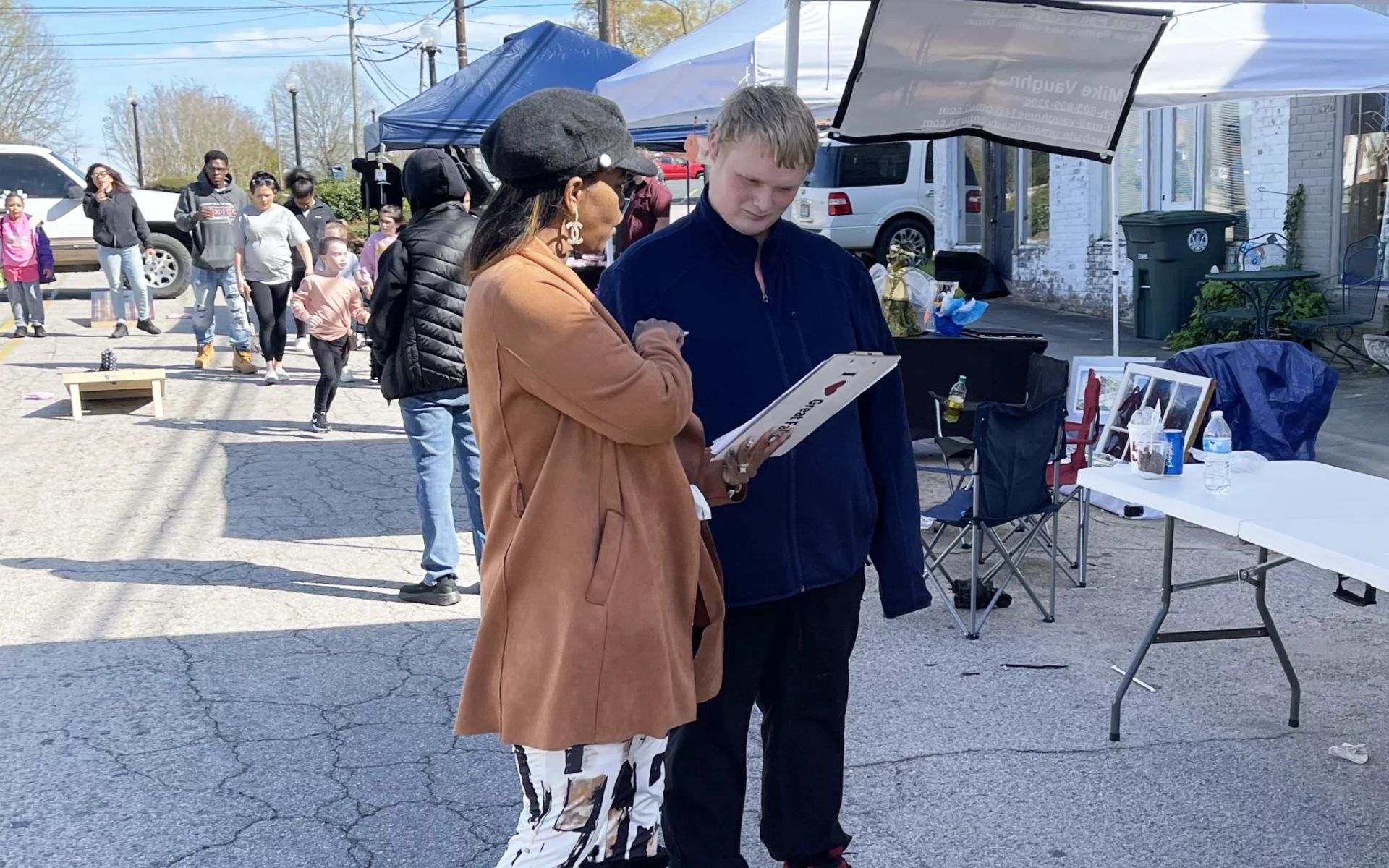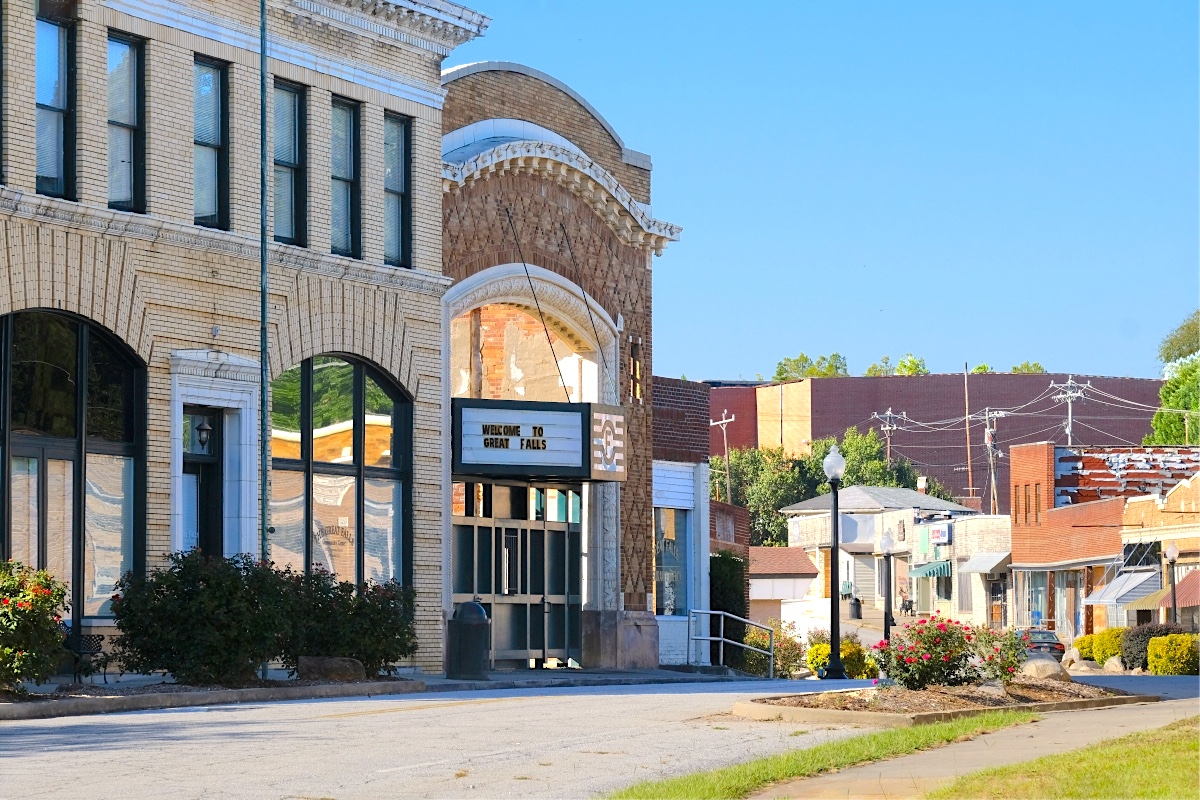How Powerful Stories are Rebuilding a Church
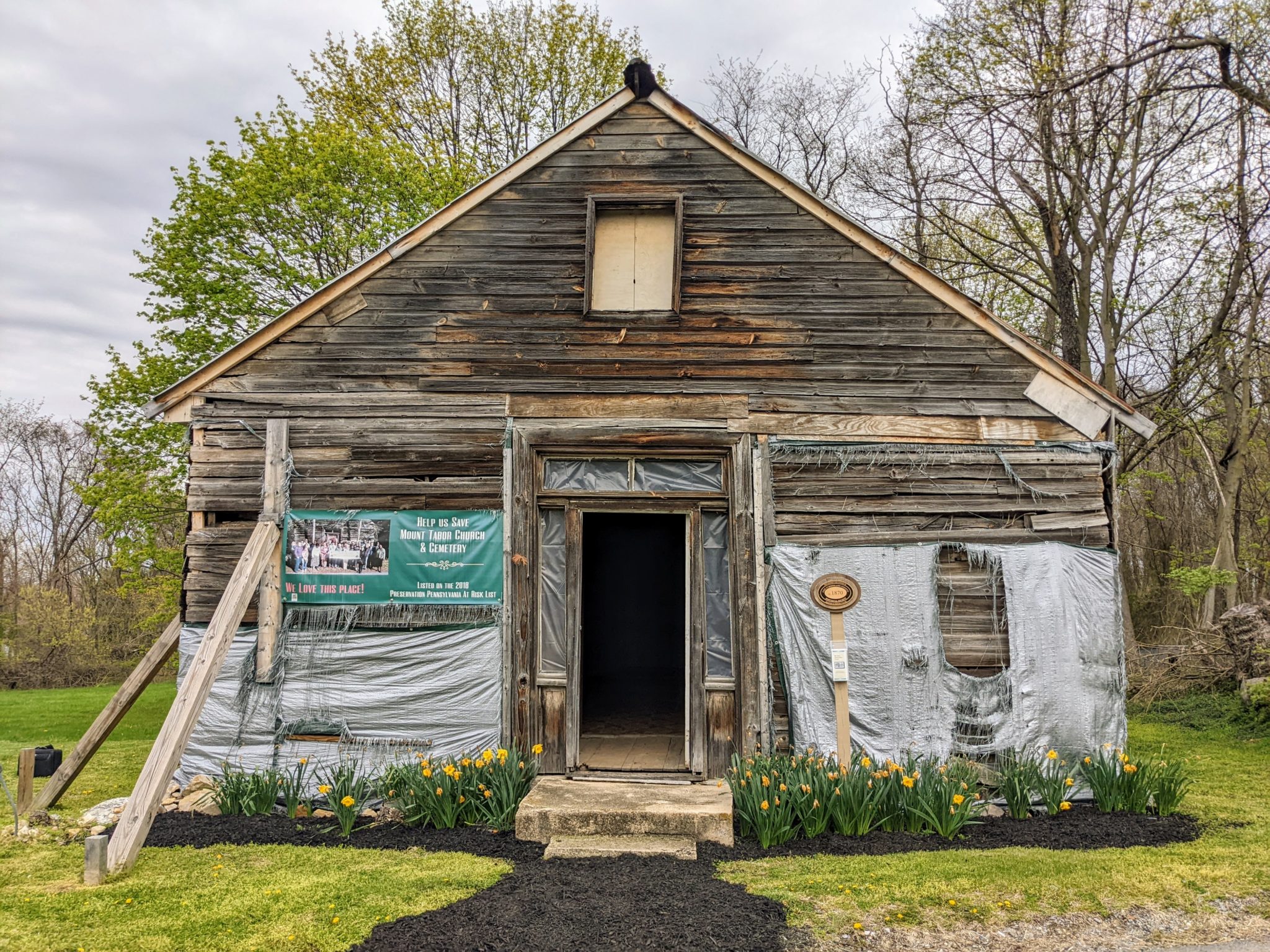
This article first appeared on the Our Towns Civic Foundation website on April 28, 2022, which you can see here.
This is the story of Elias Van Buren Parker, and how today’s telling of his story has the power to pull the town of Mt. Holly Springs, Pennsylvania from its early glory days, then decline, back to new days of glory.
This much is certain about Elias Van Buren Parker: He was born into slavery, in Virginia. He served with Union forces in the final year of the Civil War, as part of the 38th Infantry Regiment of the United States Colored Troops. And after post-war service that led to his honorable discharge from the military in New Orleans, he was determined to head north, as part of an African-American migration of people seeking work and a place to settle. One of his great-granddaughters, Janice Sweeney, says that according to family lore he was “told by his master to marry, start a family, build a church, and preach the word.”
However exactly he decided to begin the journey, Janice Sweeney’s summary accurately describes what he did. As he made his way north to Pennsylvania, Elias Parker walked over South Mountain, where the northern extension of the Blue Ridge finally lets go, to Mt. Holly Springs, Pennsylvania, about 25 miles north of Gettysburg. He married Lucinda Johnson, and they started what grew into generations of a large, sprawling family in the neighborhood of Mt. Holly Springs that the African Americans called Mt. Tabor. According to legend— and many of the stories of these parts and people in those times are inevitably legend rather than documented history—Parker was a carpenter and stone mason, using his skills to construct the Mt. Tabor African Methodist Episcopal Zion Church of pine cladding, logs, and stones. A metal hinge in the double-hung windows of the church is marked 1870, the best clue of when the church was probably constructed.
The small church buzzed as a place of worship and a hub of community activities. Mt. Holly Springs itself became a popular resort town, sought during the hot summer months by city folks, for its fresh air and amusements including a Ferris wheel, roller coaster, boating, restaurants, and more. Riding the trolley in from nearby Carlisle made the journey part of the fun.
Over the decades, more work opportunities beyond the Mt. Holly paper mill lured much of the congregation away from the town and the church. Then, the popularity of the family automobile lured many of the tourists off the trolley to other destinations. The church had a great run, but finally closed its door for good in 1970. Over the next 45 years, brush and vines completely engulfed the church. The memories of the services, the Sunday school, and the activities, began slipping away. Even today’s Mt. Holly Chief of Police, Tom Day, had thought that the church, barely visible from the street, was probably an outbuilding from someone’s farm, several people told me.
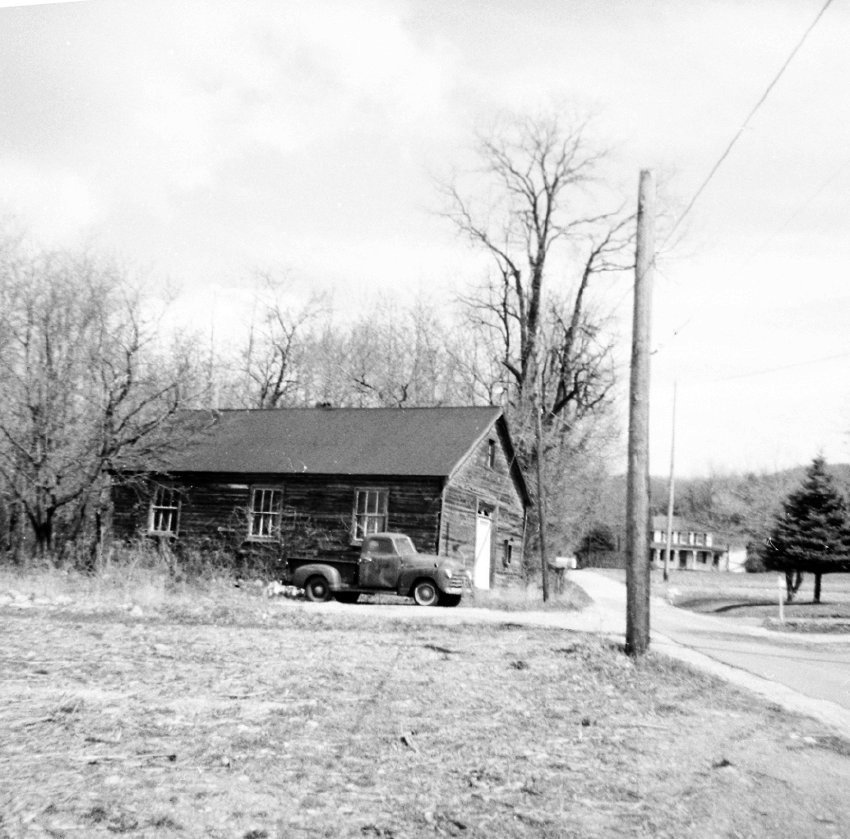
My husband, Jim, and I travelled to Mt. Holly Springs – sometimes called Mt. Holly, sometimes just Holly, and sometimes by its formal name – as the trees were starting to leaf out. We were finally, and gratefully, resuming our travels for Our Towns after two years of mostly home-bound pandemic. We went to see the church and the cemetery across the street from it, part of a series of tours by the Mt. Tabor Preservation Project to tell the stories, spread the word, and hopefully, restore the church that is so fragile that many fear could simply fall apart and crumble to the ground.
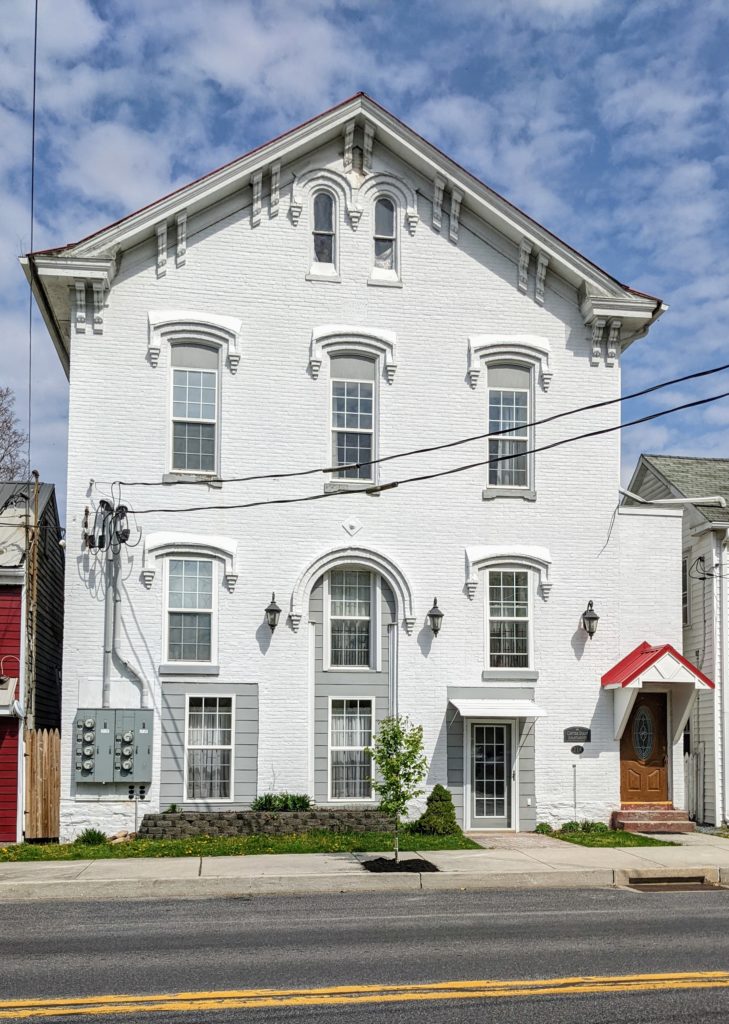
The stories of Mt. Holly have become the sinew that could connect the town, or borough, as it is officially designated, from its past glory days, through some recent decline, to a new version of thriving. As for the decline, it is evident from a quick stroll through downtown. One bookend of the historic main street, Baltimore Avenue, is dominated by a new Dollar General and a Sheetz mega-gas station. The old theater has been divvied up into a complex of apartments, which you could either describe as a loss of culture or as a promising example of repurposing, except for the eyesore display of individual utility meters displayed on the front of the building. Same for another church a few hundred feet up the street. The old houses and buildings, built right to the edge of the sidewalk, seem to serve as a kind of sound tunnel for the traffic that roars with a trail of unforgiving noise along Baltimore Avenue, which is a stretch of heavily-trafficked PA 34.
Parallel to Baltimore Avenue runs Mountain Creek, part of nature’s gift to the town and an early resort attraction. When I sat in a small park behind the Amelia S. Givin Free Library (that story to come soon), I watched a fisherman in waders casting hopefully into the currents around him. It was a step back to peace and serenity.
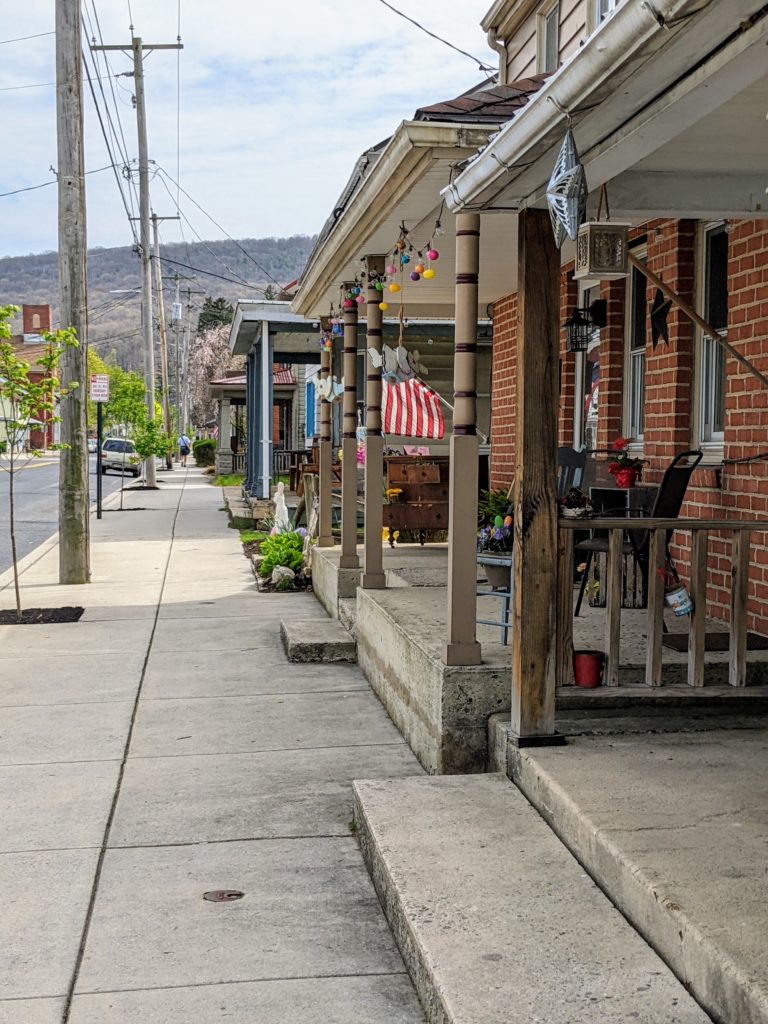
Over the last decade, many concerned citizens in Mt. Holly have kicked into gear to address the changes in town. They organized a walking-tour audit of the town and wrote a to-do list. They formed a revitalization committee. They staged rallying events and cleanups. They hung banners along the main street, and some even manned brooms to sweep the streets when the town could afford to run their mobile sweeper only once a year. The new police chief got rid of 80 junked cars. Pam Still, a relentless activist with many community organizations and efforts, began to interview older residents and collect their stories of early Mt. Holly, lest they be lost. One story that had eluded Still was that of Harriett Gumby, a granddaughter of Elias Parker.
Collecting stories can be a hard business; it requires trust on both sides. Pam Still, who is white, knew she must earn trust from Gumby to ask for her story, which she did via an introduction and good word from Dr. Richard Gobin, the highly-regarded town pharmacist, who knew both Gumby and Still. At long last, Still went to meet Harriett Gumby along with Lindsay Varner, then a director at the Cumberland County Historical Society and the Greater Carlisle Community Heart & Soul ® (CH&S) organization, of which Mt. Holly Springs had become a partner. To help foster community renewal, CH&S begins with the belief that drawing out the stories of a town’s residents is the fundamental first step to teasing out the collective aims and making explicit positive changes in the community. (CH&S is a partner and supporter of Our Towns.) In the case of Mt. Holly, the Mt. Tabor church and the nearby cemetery are an example of how stories can take hold and lead to action.
Harriett Gumby told her own story, but even more adamantly she described the importance and central role of the Mt. Tabor Church in the overlooked history of the African American community of Mt. Holly Springs. While the history of the famous white people of the area are well documented, Varner told me, the official records of the African American community are not. There are a few recordings of births, marriages, and deaths, and a marking of the “colored” cemetery on a map. But little more. Still told me that as they talked, Gumby’s gaze kept returning to her back window and the barely-visible small building beyond, which was of course, the Mt. Tabor Church.
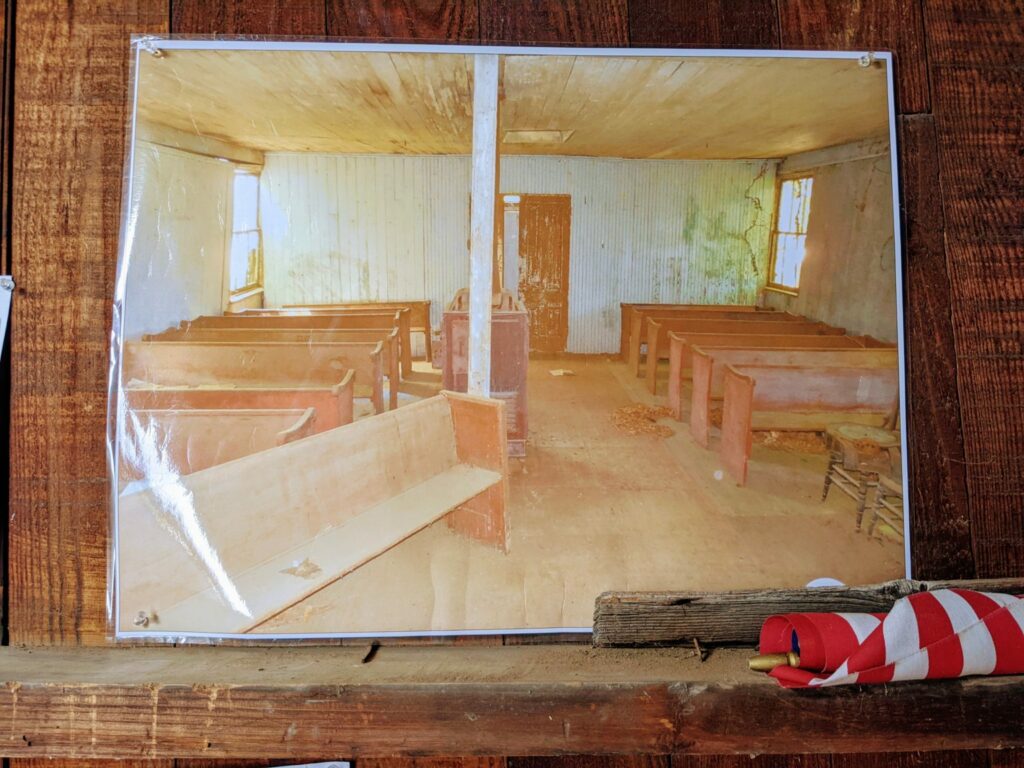
Gumby walked Still and Varner out beyond her backyard to the building, entangled in brush and poison ivy. Its door was nailed shut from the inside. Undeterred, Varner and a zoning officer who was with them, hoisted Still up through a broken window pane, over the hymnals, and onto a pew. “It was a time capsule,” Still told me, recounting when she tiptoed around inside.
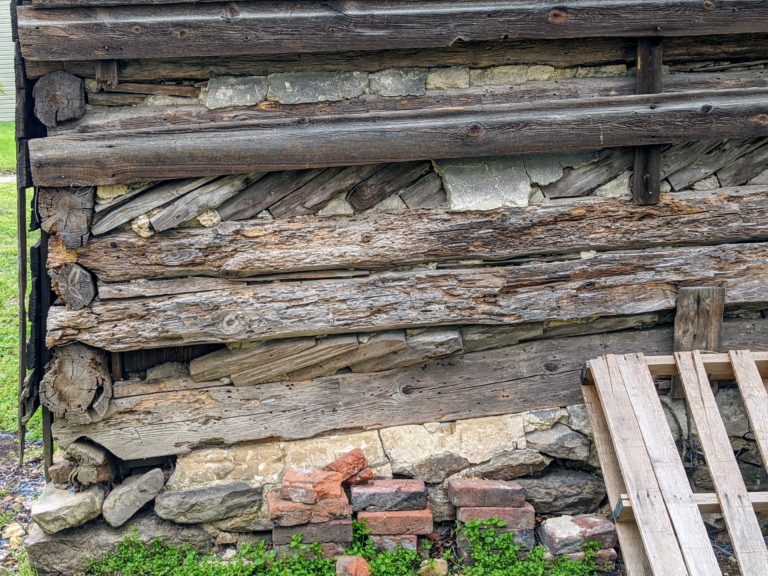
Gumby’s stories caught on and became a reality and symbol of something the town could focus on. It could be both a piece of physical restoration and a recorded piece of history of the area that had long been left out of the telling. The effort took on a life of its own.
Carmen James, a former church congregant and now president of the Mt. Tabor Preservation Project, led 20 or so of us—mostly nearby residents who all seemed to know each other – around the church grounds and cemetery. We inspected the handiwork of Elias Parker and the layers of construction materials, which by now seemed held together by a prayer. We saw the holes from the woodpeckers that had had their way with the planks on the back wall of the church. We saw the doghouse where the black vultures, a protected species, had been enticed to set up nesting away from the attic of the church. Then we walked across the road to the “colored” cemetery, where a first wave of restoration was underway.
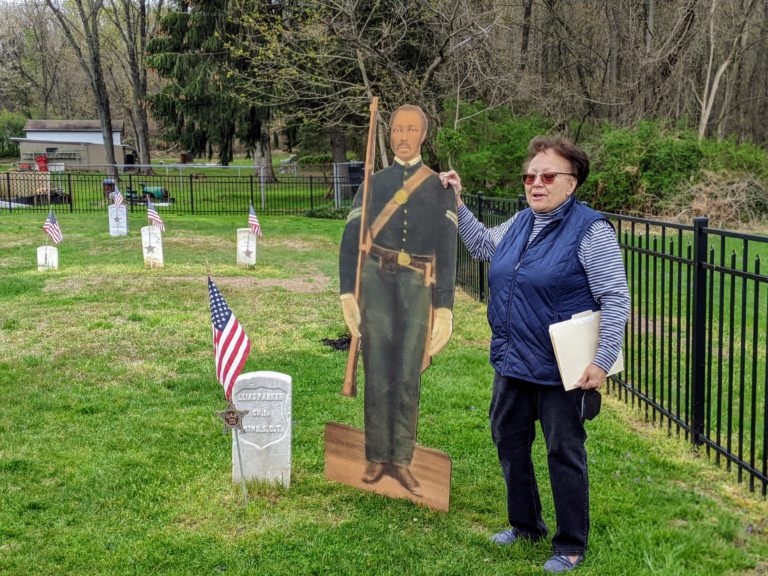
James, who is the perfect storyteller, at once knowledgeable, heartfelt, funny, and humble, told us about the 50-some grave sites, pointing out the stones of Elias Parker and six other USCT veterans. We asked about his wife, Lucinda Johnson Parker, and heard that while she may be buried there, she may also be elsewhere, like in the Johnson family plot back near the church. No one is sure. We saw the solar lights planted in the ground over the spots that the penetrating ground radar survey, conducted by students at nearby Dickinson College, believed to be the locations of the unmarked graves. James also recounted that on the same day the scientific work searching for graves at the colored cemetery was underway, there was a wicking ceremony searching for graves at the Johnson family cemetery behind the church. That contrast caught our attention.
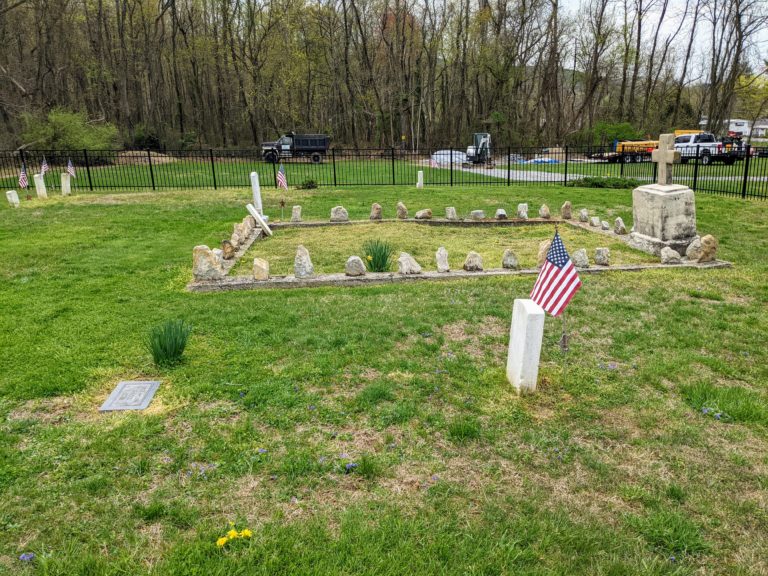
We heard about a recent Eagle Scout project, ending with an elegant wrought iron fence surrounding the graveyard. We learned that a cemetery flagpole will be installed in a matter of weeks. One of the two donors, a former military man, said, “Every veteran should have a flag flying over his grave,” quoted James.
We admired the before-and-after of the headstones in original and painstakingly-cleaned-up iterations. We heard the story of Danielle Ward-Smith, who had recently discovered the grave of her great-great-grandfather, USCT soldier Henry Ward, buried in the cemetery. Ward-Smith and her husband, who owns and drives trucks, volunteered to haul away and store the contents of the church for safe keeping until the restoration can be completed.
There is a long way to go. The church has made it onto the National Register of Historic Places, and design and engineering plans for the restoration have been drawn, but even a generous grant from Pennsylvania’s Department of Community and Economic Development didn’t meet the sole developer’s bid so far.
Harriett Gumby died a few months ago, short of seeing her dream of the church restoration fulfilled. She is not buried in the colored cemetery, but in the now-desegregated Mt. Holly Springs Cemetery across town. Burials in the colored cemetery are on hold, at least for now until the graves can be verified.
The church is a work in progress. When I asked Lindsay Varner how likely it was that the project will reach its goals, she told me, with no hesitation, “100 percent sure”. I asked Carmen James the same question, and she quoted Harriett Gumby, who used to say, “God’s hand is on this project.”

Deborah Fallows is a writer and a linguist. She has written for The Atlantic, National Geographic, Slate, The New York Times, The Washington Post, and The Washington Monthly. She is the author of three books including Our Towns: A 100,000 Mile Journey into the Heart of America (2018), a New York Times bestseller co-written with her husband, James Fallows. The HBO documentary, also called Our Towns, based on the book, is now streaming on HBO Max. Deborah and James founded the nonprofit Our Towns Civic Foundation to promote the ideas of resilience and renewal in towns across America.


